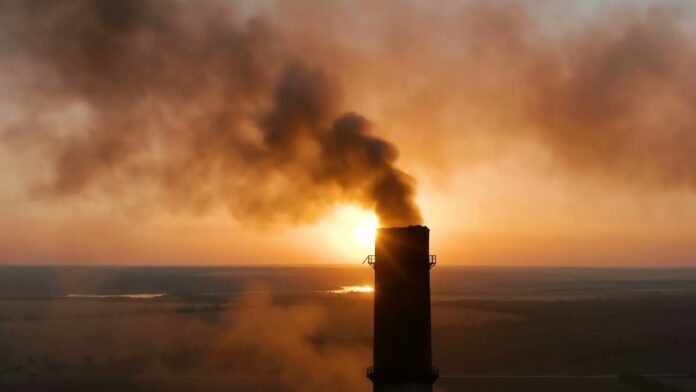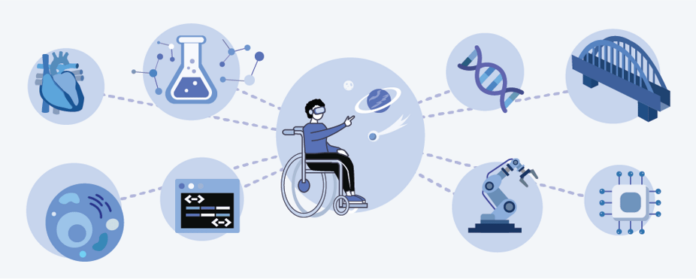Water is a vital resource, essential for all aspects of life. However, its purity and availability are under threat due to water pollution. The World Health Organization estimates that 1.8 billion people globally use a contaminated source of drinking water, leading to around 485,000 deaths every year. Furthermore, water pollution also has severe consequences for aquatic ecosystems, threatening the delicate balance of our planet’s biodiversity. In this article, we will delve into the multifaceted nature of water pollution, exploring its causes, impacts, and potential solutions.
Understanding Water Pollution
Water pollution refers to the contamination of water bodies, including rivers, lakes, oceans, and groundwater, with harmful substances. These pollutants can come from various sources, including industrial activities, agricultural practices, urbanization, and household waste. The severity of water pollution varies depending on the type and amount of pollutants present, as well as the vulnerability of the affected water body. Let us now explore the different categories of water pollution and their characteristics.
Industrial Pollution
The industrial sector is one of the primary contributors to water pollution. Factories, refineries, and manufacturing plants release a range of toxic substances into water bodies, either directly or through streams and rivers. Some of the common pollutants include heavy metals, pesticides, solvents, and industrial wastewater.
Heavy Metals
Lead, mercury, and cadmium are among the heavy metals that accumulate in water bodies, posing severe health risks to humans and wildlife. These metals enter the water supply through industrial discharges, sewage, and runoff from landfills and mining sites. Prolonged exposure to these contaminants can lead to neurological disorders, kidney damage, and even cancer.
To mitigate this type of pollution, industries must adhere to strict regulations and implement effective treatment methods to remove heavy metals from their wastewater before discharging it into the environment.
Pesticides and Fertilizers
Agricultural practices, such as the use of pesticides and fertilizers, also contribute significantly to water pollution. These chemicals can enter water bodies through surface runoff or leaching into groundwater, leading to algal blooms, reduced oxygen levels, and harmful effects on aquatic organisms.
To tackle this issue, farmers can adopt sustainable agricultural practices that minimize the use of harmful chemicals and promote natural methods of pest control. Government policies and programs can also provide incentives for farmers to switch to more environmentally friendly practices.
Municipal and Household Waste
Waste disposal from households and municipalities is another significant contributor to water pollution. Improperly treated sewage, solid waste, and chemicals from households can end up in rivers and lakes, contaminating them with harmful pathogens and nutrients.
Sewage and Wastewater Treatment Plants
Sewage treatment plants are designed to remove pollutants from wastewater before it is discharged into water bodies. However, these facilities are not always effective, and many developing countries do not have adequate infrastructure for proper sewage treatment. As a result, untreated or partially treated sewage can end up in our rivers and oceans, posing a threat to public health and the environment.
Efficient wastewater treatment systems and regular maintenance and upgrading of existing plants are crucial in reducing the impact of municipal waste on water resources. Governments must prioritize investment in this area to ensure the safe disposal of waste and protect water quality.
Solid Waste Disposal
Improperly disposed of solid waste, such as plastics and other non-biodegradable materials, also contributes to water pollution. These items can end up in water bodies, causing harm to marine life and disrupting the ecosystem. Additionally, solid waste can release harmful chemicals when it decomposes, further contaminating the water.
To combat this issue, communities and individuals must implement proper waste management practices, including recycling, composting, and responsible disposal. Governments can also enforce laws and regulations to reduce the production and use of single-use plastics, promoting more sustainable alternatives.
Oil and Chemical Spills
Accidental or deliberate releases of oil and chemicals into water bodies can have catastrophic effects on marine life and ecosystems. These spills can occur during transportation, storage, or extraction activities, such as offshore oil drilling. The chemicals released can contaminate water supplies, kill aquatic organisms, and persist in the environment for years to come.
To prevent these incidents, stricter regulations and safety measures must be implemented in industries that handle and transport hazardous materials. Governments should also invest in research and development of advanced spill response technology to minimize the impact of such accidents.
Impact of Water Contamination on Health and Environment

Water pollution has far-reaching consequences for both human health and the environment. Let us explore some of its most significant impacts.
Human Health
Unsafe drinking water is a leading cause of diseases worldwide, causing illnesses such as diarrhea, typhoid, and cholera. Prolonged exposure to contaminated water can also lead to long-term health problems, including neurological disorders, reproductive issues, and various types of cancer.
Furthermore, consumption of fish and seafood from polluted water bodies can also pose health risks due to bioaccumulation of pollutants in the food chain. Heavy metals, pesticides, and industrial chemicals can accumulate in the tissues of fish and other aquatic animals, increasing their toxicity to humans.
Aquatic Ecosystems
Water pollution has devastating effects on aquatic ecosystems, threatening the delicate balance of our planet’s biodiversity. Chemicals and other toxic substances can kill fish and other aquatic organisms, leading to imbalances in the food chain. Furthermore, nutrient pollution can cause algal blooms, deplete oxygen levels, and create “dead zones” where no life can survive.
These impacts not only harm the aquatic species but also have a ripple effect on the entire ecosystem. For example, the death of fish populations can impact the livelihoods of fishing communities and disrupt the ocean’s natural nutrient cycling.
Simple Steps to Reduce Water Pollution at Home

While addressing industrial and municipal sources of water pollution is crucial, individuals can also make a significant impact by adopting simple and sustainable practices at home. Here are some steps you can take to reduce your contribution to water contamination:
Conserve Water
Conserving water not only helps in preserving this precious resource but also reduces the amount of wastewater that needs treatment. Fix any leaks in your home, turn off the tap while brushing your teeth or washing dishes, and use appliances that are more water-efficient.
Proper Waste Disposal
Make sure to dispose of waste correctly, follow recycling guidelines, and avoid littering. Avoid flushing harmful chemicals such as medication, paint, or cleaning products down the drain, as they can end up in water bodies.
Use Environmentally Friendly Products
Many household cleaning and personal care products contain harmful chemicals that can pollute water when washed down the drain. Opt for environmentally friendly products that do not contain harsh chemicals and are biodegradable.
Be Mindful of What You Pour Down the Drain
Chemicals such as motor oil, antifreeze, and pesticides should never be poured down the drain. These substances can contaminate water supplies and have devastating effects on aquatic life.
Community Efforts to Combat Water Contamination
Apart from individual actions, communities can come together to address water pollution collectively. Here are some examples of community efforts to combat water contamination:
River Cleanups
Organizing river cleanups is an effective way to remove trash and debris from water bodies, preventing it from entering our oceans. These initiatives also raise awareness about the importance of protecting our water resources and promote a sense of responsibility towards our environment.
Promoting Sustainable Agriculture Practices
Community-led programs that educate farmers about sustainable agricultural practices and provide them with resources to implement these methods can significantly reduce the use of harmful chemicals in farming. Promoting organic farming and supporting local farmers can also contribute to reducing water pollution.
Collaborative Efforts with Industries
Communities can work together with industries to come up with sustainable solutions that reduce their impact on water resources. This can include implementing more eco-friendly production methods, investing in wastewater treatment systems, and reducing emissions and waste.
Innovative Technologies for Water Purification
Alongside community efforts, advancements in technology have also played a vital role in addressing water pollution. Here are some innovative technologies being used for water purification:
Reverse Osmosis
Reverse osmosis is a water filtration process that uses a semipermeable membrane to remove impurities, including contaminants, salts, and microorganisms, from water. This technology is commonly used in desalination plants and has proven to be effective in purifying water for human consumption.
Ultraviolet (UV) Disinfection
UV disinfection is a chemical-free method of treating water to remove harmful pathogens. It uses UV light to disrupt the DNA of bacteria, viruses, and other microorganisms, rendering them unable to reproduce and cause disease. This technology is becoming increasingly popular due to its effectiveness and low environmental impact.
Nano-filtration
Nano-filtration is a process that uses semi-permeable membranes with smaller pores than those used in reverse osmosis. This technology is effective in removing viruses, bacteria, and other small particles from water while retaining essential minerals. It is often used in industrial applications such as food and beverage production.
Government Regulations and Policies on Water Pollution
Government intervention is crucial in addressing water pollution. Here are some examples of regulations and policies that have been implemented to combat this issue:
The Clean Water Act (CWA)
The CWA is a federal law in the United States that regulates the discharge of pollutants into water bodies and sets water quality standards for surface waters. It also requires industries to obtain permits for discharging wastewater into water bodies and provides funding for wastewater treatment facilities.
The European Union Water Framework Directive (WFD)
The WFD is a comprehensive legislation that aims to achieve good water quality across the EU by 2027. It sets out guidelines for protecting and improving water resources, including measures to reduce pollution and promote sustainable water use.
Zero Liquid Discharge Policy in India
In 2016, India implemented a policy that requires all industries to achieve zero liquid discharge, meaning no wastewater can be discharged from their premises. This policy has significantly reduced industrial pollution in the country’s water bodies and has encouraged industries to implement efficient wastewater treatment systems.
Global Initiatives to Tackle Water Contamination
Water pollution is a global issue that requires cooperation and collaboration between countries. Here are some international initiatives that have been undertaken to address this problem:
Sustainable Development Goal 6: Clean Water and Sanitation
In 2015, the United Nations adopted 17 Sustainable Development Goals (SDGs), with SDG 6 specifically targeting access to clean water and sanitation for all. It aims to improve water quality, increase water efficiency, and protect and restore water-related ecosystems.
World Water Day
World Water Day, observed on March 22nd every year, is an initiative by the UN to raise awareness about the importance of freshwater and advocate for the sustainable management of water resources. Each year, a different theme is chosen to highlight a specific aspect of water sustainability.
Future Outlook and Sustainable Solutions for Clean Water
As the world’s population grows and industrialization continues, the demand for clean water will only increase. However, with effective policies, innovative technologies, and collective efforts, we can safeguard this vital resource for future generations. Here are some sustainable solutions for clean water:
Investing in Modern Infrastructure
Governments must invest in modern infrastructure to provide safe and reliable access to clean water for all. This includes upgrading and maintaining existing water treatment plants, as well as investing in new technologies such as desalination plants to meet the growing demand for freshwater.
Promoting Sustainable Practices
Individuals must adopt sustainable practices in their daily lives to reduce their contribution to water pollution. Governments can also incentivize businesses to implement eco-friendly production methods and promote sustainable agriculture practices.
Education and Awareness
Raising awareness about the importance of water conservation and the impact of water pollution is crucial in promoting behavior change. Governments, NGOs, and communities must work together to educate individuals, especially children, about how they can contribute to protecting our water resources.
Conclusion
Water contamination is a multifaceted issue that requires a comprehensive approach to address it effectively. By understanding the various sources and impacts of water pollution, we can take individual and collective action to protect this vital resource. It is our responsibility to ensure that future generations have access to clean and safe water, and we must act now before it’s too late. Let us strive towards a world where every drop of water is pure and fit for consumption.









